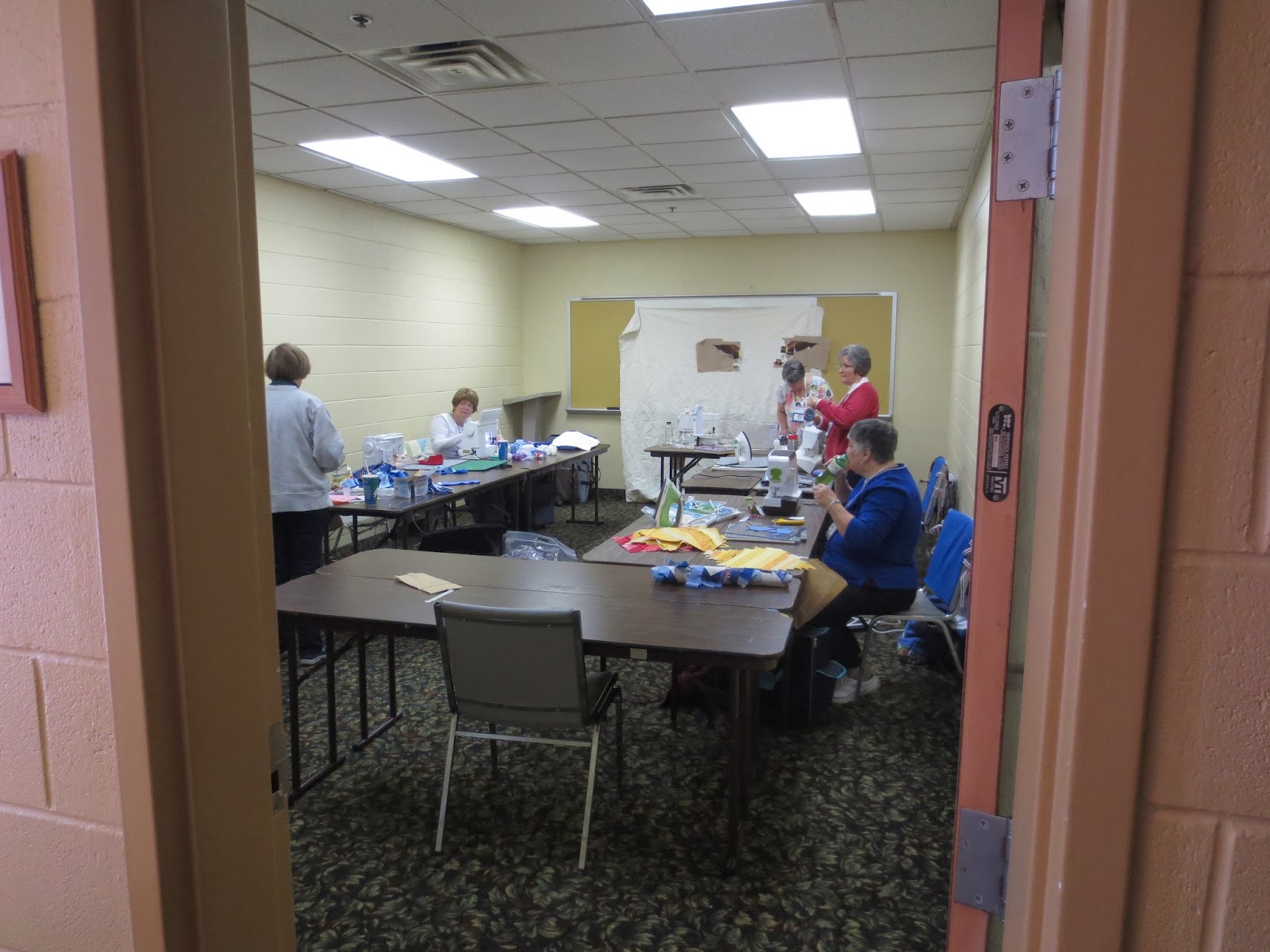So, with the help of PantoVision attached to her 22" Innova on a 12' Table I learned how to use the longarm to apply quilting patterns to the 'sandwich.' Turns out I really like it. I've lost count of how many over the last year and a half, but more than a hundred. So I've learned a few things along the way that I would like to share with those of you that do make blocks, that do design, that do piece, can actually sew and know how the concept of a Color Wheel works. Which based on my experience professional sports teams don't know either or like me, don't care. Me I know what I like to look at, it may or may not fit into some acceptable Color Theory...but fitting in isn't a priority for me. I don't care what color your quilt is. I'm going to do what I strive to do whether you are making a donation to the Quilts of Valor, we have bartered your quilt for a quilt top and back appropriate for a Quilt of Valor or you have agreed to trade my labor time and thread for material we can use for Quilts of Valor based on a price per square inch...My goal is to compliment your quilt. That is my goal for every quilt I do whether a volunteer quilt for Quilts of Valor, Project Linus or some other organization we have chosen to assist with our equipment, experience and time. But I need your help before it gets loaded on our frame. Long Before Loading.
The piecer needs to have a concept of square. If the blocks are square that develops a really good foundation for a square quilt. By square I mean it in it's simplest form. The distance from one corner of the top to the other corner is the same and the distance from one corner to the other on the bottom is the same as the top. It helps too if the distance from one corner on the left side to the other corner on the left side is the same and the right side as well. Please, measure your tops accurately and record them for the longarmer. That goes for the back as well, square and no less than four inches larger than the top. If you choose to supply your own batting it to should be the same size as the back. You have heard me mention there are piecers that I really like to longarm for...they do this...consistently.
Preparing a quilt for longarming includes pressing. Pressing the seams as flat as possible on the top and if the back is pieced those seams as well. Apparently you should press vertically as opposed to horizontally. It has something to do with stretching the fabric. Good luck with that. If I had a preference the back seam would be 1/2" pressed open. Most of those that know me prepare their backs this way. Even if you have to ship the top and back it should be pressed. It saves time even if it has to be gone over it with an iron before it is loaded. If you are paying a longarmer many times pressing is an additional fee...save yourself some money. I have noticed many longarmers charge for just about everything in addition to the longarming. $10 - $15 seems to be pretty standard. Pressing, squaring a back, fixing a seam, trimming etc. I've even seen some of these chores listed at $25 an hour. Not bad job if you can get it. Keep the money in your pocket. Think about it...what might take you 30 minutes might take someone else an hour.
I want to pass this on..."quilting issues such as puckering, weak seams/holes, wavy borders, pleats etc. will not go away with the quilting, they may be exaggerated." As much as I'd like to take credit for how nice a quilt looks when it is done, I can't. Nor can I take credit for puckering, pleats, ripped seams, wavy borders or anything else. Of course I want every quilt to be perfect. I'm also realistic. But I know this to be true. When I'm done longarming and someone says, "What a beautiful quilt." It is that way because Long Before Loading someone was doing it right. And like anything else in life...there is a wrong way and a right way.
Thought I'd pass this along...Elaine said something about it being relevant. Whatever...





















